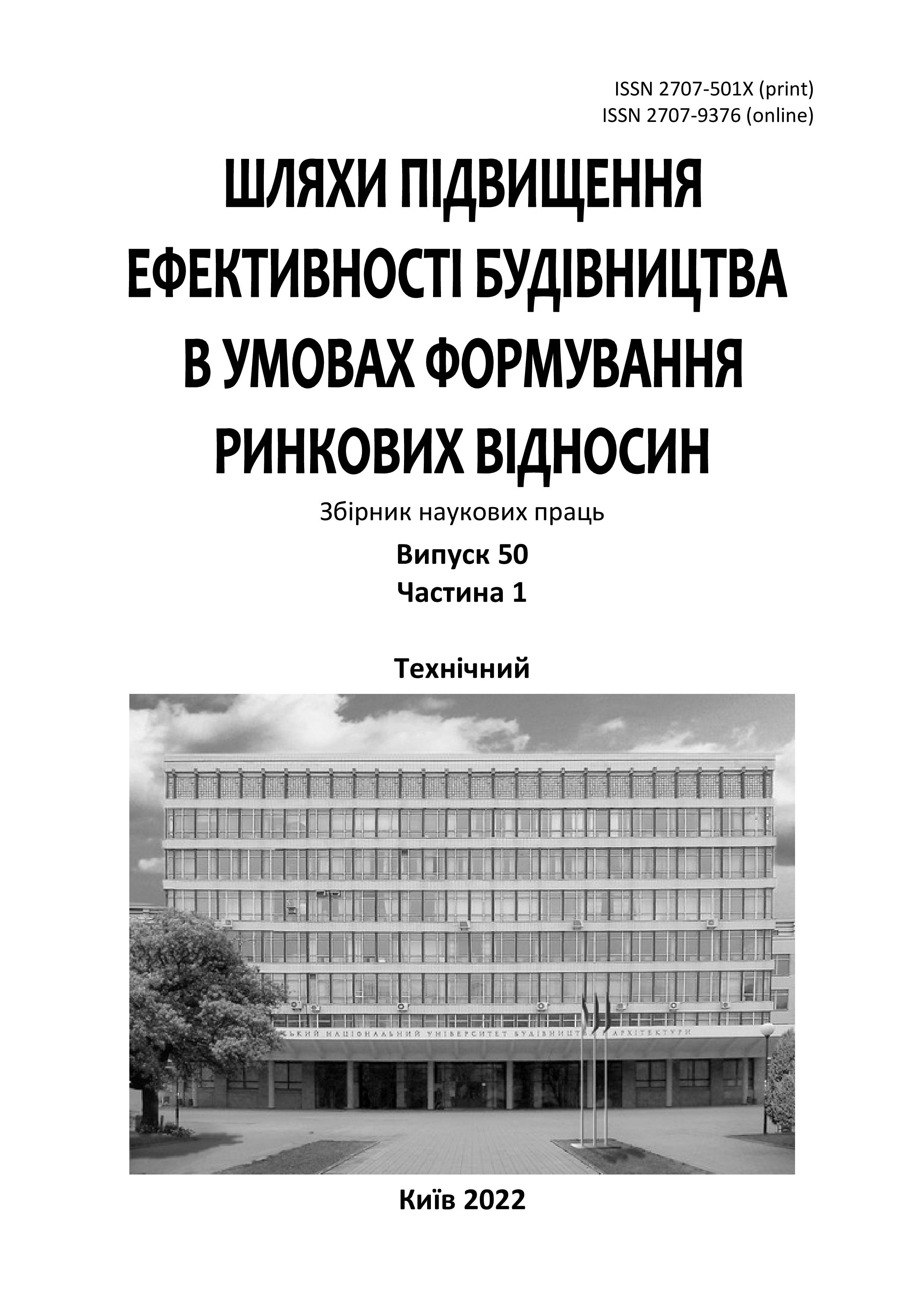Determination of the impact of the load on buildings for the subsequent optimal choice of the organizational and technological solution of the construction project
DOI:
https://doi.org/10.32347/2707-501x.2022.50(1).137-146Keywords:
Load impact, organizational and technological solution, optimization, cost efficiency, Soil Structure Interaction, Static Load, Dynamic LoadAbstract
The present document helps to determine the impact of loads on buildings for the subsequent optimal choice of the organizational and technological solution of the construction project.
In further studies it is shown that the effect of loads has a major influence on the process of construction and the optimization of the time cost efficiency. The known literatures describe the loads as a statistical variable which is related to the local, environmental and useable conditions of the project.
All types of loads, static and dynamic, directly reduce or increase the cost of the project, it depends of the consideration taken during the design. For example, the main variable that will be considered in this document is the soil effect on the cost of the structure under static and dynamic loads, if it is taken or not into account during the design of the superstructure, and how it changes the whole behavior of any structure making it more rigid or more flexible.
A particular study is done here down in this document showing the effects of soil on two different buildings during a dynamic impact (seismic event in our case). Moreover, this document provides with the needed formulas and tools to describe the soil material in 3D design softwares. The use of these tools will let the structural designer to change the response spectra curve and reduce the influence of the dynamic impact on the building. Thus, a comparative table will show the difference between the use of rigid base models and flexible ones to spotlight the effects of the soil. Furthermore, a sensitivity study is done showing the contribution part of some formulas in the soil consideration.
The reduction in the base shear will allow the client and contract to reduce the budget of the project and by this an optimization of the constructional time can be done.
References
American Society of Civil Engineers “ASCE7-16” (2017), “Minimum Design Loads and Associated Criteria for Buildings and Other Structures”.
National Earthquake Hazards Reduction Program “NEHRP” (2012), National Institute of Standards and Technology “NIST”, “Soil Structure Interaction for Building Structures”.
Caselunghe, A. & Eriksson, J. (2012). “Structural Element Approaches for Soil-Structure Interaction”. Available at: https://publications.lib.chalmers.se/records/fulltext/160481.pdf
Federal Emergency Management Agency “FEMA” (2020), National Earthquake Hazards Reduction Program “NEHRP”, National Institute of Standards and Technology “NIST”, “A Practical Guide to Soil-Structure Interaction”.
EN 1997-1 (2004) (English): Eurocode 7: Geotechnical design - Part 1: General rules [Authority: The European Union Per Regulation 305/2011, Directive 98/34/EC, Directive 2004/18/EC]
EN 1998-1 (2004) (English): Eurocode 8: Design of structures for earthquake resistance – Part 1: General rules, seismic actions and rules for buildings [Authority: The European Union Per Regulation 305/2011, Directive 98/34/EC, Directive 2004/18/EC].
Braja M. Das (2016). “Principles of Foundation Engineering”, available at: https://www.academia.edu/44479953/Principles_of_Foundation_Engineering
Anand, V., Satish Kumar, S.R. (2018). Seismic soil-structure interaction: a state-of-the-art review. Structures, 16, pp. 317-326, 10.1016/j.istruc.2018.10.009.
Derinöz, O. (2006). “Impacts of soil-structure interaction on the fundamental period of shear wall dominant buildings”, available at: https://etd.lib.metu.edu.tr/upload/12607448/index.pdf
Ünal, O. (2003). 3-D soil structure interaction analyses of three identical buildings in Sakarya city after 17 August 1999 Kocaeli earthquake [M.S. - Master of Science]. Middle East Technical University.
Rahhal, M.E. (1991). Propriétés dynamiques et réponse sismique des dépots argileux de l’Est du Canada. Master thesis, Université de Sherbrooke, Quebec, Canada.
Mylonakis, G., Nikolaou, S., and Gazetas, G. (2006). Footings under seismic loading: Analysis and design issues with emphasis on bridge foundations. Soil Dynamics and Earthquake Engineering, Vol. 26, pp. 824-853
ESI Group, “Scilab Computer Program” (2020). Available at: https://www.scilab.org/
Autodesk, “Robot Structural Analysis Software”, 2019. Available at: https://www.autodesk.com/products/robot-structural-analysis/overview?term=1-YEAR&tab=subscription
Downloads
Published
How to Cite
Issue
Section
License

This work is licensed under a Creative Commons Attribution 4.0 International License.
Authors who publish with this journal agree to the following terms:
- Authors retain copyright and grant the journal right of first publication with the work simultaneously licensed under a Creative Commons Attribution License that allows others to share the work with an acknowledgement of the work's authorship and initial publication in this journal.
- Authors are able to enter into separate, additional contractual arrangements for the non-exclusive distribution of the journal's published version of the work (e.g., post it to an institutional repository or publish it in a book), with an acknowledgement of its initial publication in this journal.
- Authors are permitted and encouraged to post their work online (e.g., in institutional repositories or on their website) prior to and during the submission process, as it can lead to productive exchanges, as well as earlier and greater citation of published work (See The Effect of Open Access).

